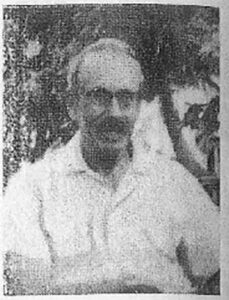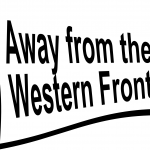Salonika Reunion Association: Huntingdon and District Branch
The Salonika Reunion Association (SRA) began life in the early 1920s when a small group of officers started to organise an annual dinner and wreath laying at the Cenotaph. It soon became clear to them that this was of interest to others, so it was advertised more widely and soon a more formal group was formed. By 1925, 1,500 British Salonika Force (BSF) veterans, including former nurses and Voluntary Aid Detachments (VADs) attended the wreath laying and 600 of those went to the dinner. Membership was open to all those who had served in the Salonika campaign, whatever their rank. The objectives of the SRA were to foster their wartime spirit of comradeship through social activities, hold an annual parade and ceremony of commemoration in London. Later a benevolent fund was established to aid veterans in need. The London commemoration, which became known as ‘Salonika Sunday’ was held on or close to 30 September, to mark the Armistice when Bulgaria had surrendered.

Dr Arthur Atkins Greenwood in 1961, The Mosquito, No. 137, March 1962 p. 14 (© Salonika Campaign Society)
Interest spread beyond London and branches of the SRA were eventually formed in several parts of the country. One of these branches was set up in Huntingdonshire. Dr Arthur Greenwood who had served in Salonika with the Royal Army Medical Corps was instrumental in its establishment. On 15 February 1930, a dinner and inaugural meeting of the Huntingdon and District Branch of the Salonika Reunion Association was held at the Walden Café in Huntingdon. Dr Cross from St Neots was proposed as its first President and Dr Arthur Greenwood was elected as Honorary Secretary and Treasurer. Mr Graves was elected as Assistant Honorary Secretary and other committee members were Mr P Sullivan (Fenstanton), Mr Luff (St Neots) Mr F Creamer (Godmanchester) Mr C Howard (Huntingdon) Mr F Johnson and Mr F Edwards (Ramsey) Mr A Creamer (Yaxley) Mr G Wadsworth (St Ives) and Capt Linton (Buckden). The evening concluded with a concert and songs around a piano, played by Major Green.
It was reported in The Peterborough & Hunts Standard, 21 February 1930, p.8 that initial membership stood at around 40 members. The Branch aims mirrored those of the national association and included fund-raising for local activities and the benevolent fund. An important function was to enable and encourage members to join the act of commemoration in London each year.
In addition to the elected officers, other local attendees at the Branch meetings during 1930 included Messrs Graves, Joyce, J Rowe, Kilty, Marriott, Campbell and G Clifton (Huntingdon), W H Allen, Dear, Paine and Bedford (Godmanchester), Senescall (Needingworth), Howard, W Dawson, J Dawson, W L Payne, G B Houghton (Ramsey), Young (St Neots), Cuckoo (Brampton), Howell, J R Papworth (Fenstanton), W G Allen, Barber (Alconbury), Grainger (Bury) and Kiddle (St Ives).
Later that year, 39 members from the Branch attended the annual event in London on 30 September, where they joined other members from across the country in commemorating the Armistice of 30 September 1918. The Huntingdon detachment paraded down Horse Guards Parade, Whitehall, led by their president Lieutenant Colonel E W Cross and behind their Cambridge Branch comrades. Thousands of men and several detachments of women were inspected by Field Marshal Sir George Milne, who had been the Commanding Officer of the British Salonika Force during the war.
Membership of the Huntingdon Branch continued to grow. Newspaper reports of their 1931 annual meeting at the Walden Café, reported that over 60 members were in attendance. Dr Greenwood continued as Secretary and Treasurer, the committee was re-elected apart from Messrs Creamer and Luff who stood down; Mr Cyril Young joined the committee.
Various social and fundraising events continued to be held and in June 1932 the Branch organised a large summer fête, which was held at Island Hall in Godmanchester. The Peterborough Standard, 17 June 1932, p.4, reported that ‘it was a resounding success’. It was a packed programme of events, which included a Boxing Display, a Bowls Competition, and a Punch and Judy Show. There was a wide range of stalls and sideshows for visitors, and it is likely that these were organised by members of the Branch or their relatives. Those named in the newspaper report included Mrs Garrard, Mrs Sullivan, Mr and Mrs Papworth, Mrs Ding, Mrs Barker, Mrs Howard, Joan Haynes, Joan Howard, Audrey Turnbull, Mr F Edwards, Mr G Houghton (Ramsey), Mr S Johnson, Mr P Sullivan (Fenstanton), Mrs Lofts, Mrs Greenwood, Mrs Staples, Mrs Mulcaster, Mrs Graves, Mrs Creamer, Miss K Figg, Mr and Mr J B Kelly, Miss Stables, Miss Melling, Jack and Phil Howard, Miss Wells and Miss L Cooper. The fête continued into the evening and concluded with dancing on the lawn. A substantial amount was raised for the Branch funds.
By February 1933, when they held their annual dinner at the Walden Café their annual report confirmed an increase in membership to 74 and a profit of £60 from the fête and draw. There were no new names amongst the re-elected committee and officials. Later that year a planned children’s Christmas party was cancelled ‘owing to epidemics’. It was reported in the Peterborough Standard, 1 June 1934, p.2 that this was finally held in Godmanchester in the summer of 1934, with tea taken at the Red House and sports and competitions in the grounds of Farm Hall.
No more local newspaper reports have been identified after 1934. It is not known whether the Branch continued to be active in the run up to the Second World War or whether it was wound up in the mid-1930s. Dr Greenwood emigrated to Kenya in 1951.
The national SRA continued until 1968 when the difficult decision was taken to disband the Association. Fifty years after the end of the First World War it had become increasingly difficult to find volunteers for the national and branch committees and fewer veterans were able to attend the annual commemorations. However, a group of the most active veterans continued to commemorate the Salonika Campaign each year through a new organisation, The Salonika Society. That new body welcomed descendants of BSF veterans as members, but it too folded in the 1990s. The Society’s former secretary, Philip Barnes, himself the son of a Salonika veteran wanted to maintain the tradition and he was the founder of today’s Salonika Campaign Society.
About the Researcher
Dr Arthur Greenwood’s story and that of the Hunts Branch of the SRA has been researched by Lyn Edmonds, who was the Project Lead for ‘Away from the Western Front’ and has remained interested in telling the stories of those who served in the less well-known campaigns of the First World War. Lyn has undertaken family history research for many years and has researched many of the soldiers’ stories on this website.
Lyn was formerly the Project Lead for the ‘Gallipoli Centenary Education Project’, which was also funded by the Heritage Lottery Fund during the centenary of the First World War.

